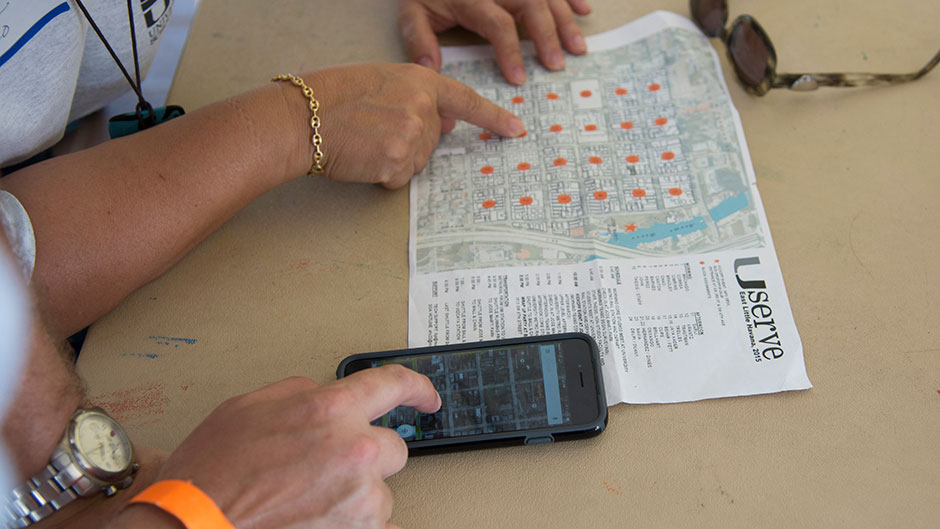City of Miami Mayor Tomas Regalado kicked off U-Serve with a lesson to students, giving them some background and history of Little Havana, including that it was once called Riverside. Regalado also said that Jose Marti Park was not far from the place where Julia Tuttle and Mary Brickell joined forces, from opposite sides of the Miami River, to form the City of Miami in 1896—making it the only woman-founded major city in the world. Waves of immigrants since that time have called Little Havana home, which is part of why it is so important to the history and shape of Miami, Regalado said.
Rodolphe el-Khoury, dean of the School of Architecture, also spoke at the kickoff and emphasized the community building aspects of the day of service, as well as the relationship between the school and the City of Miami. “Most architecture schools are not involved in their communities. There’s usually no relationship or a contentious one,” el-Khoury said. “The relationship between us and the City of Miami is truly unique, and we are proud of that.”
Once students and faculty were deployed, smartphones in hand, the real work was done. “This was an opportunity for us to underline for students the point that, throughout history, architects have had a role as civic leaders,” said Sonia Chao, director of the Center for Urban and Community Development and a member of the school’s Community Engagement Workgroup. “Now, thanks to technology, there are more innovative ways that we can continue to engage with communities.”
Students enjoyed the change in routine and the chance to interact in new ways. “U-Serve is my favorite event in school so far. I loved it and had such a good time,” said third-year student Basma Al-Ohaly. “I have friends that never enjoy or participate in academic events but they really liked U-Serve day and didn’t leave until the end of the day. It was an unforgettable experience for us. We enjoyed every second of it.”
Third-year graduate student Emma May enjoyed the chance to interact with students she doesn’t see on a regular basis. She was also pleased that several faculty and the school’s dean participated and interacted with students in a casual environment.
Samuel Wyner, another third-year student, liked that they were applying architecture style and knowledge in a real life scenario while getting a better understanding of the Miami community and how to contribute to it. Masters of Urban Design student Adam Bonosky thought the app that students used, which was modified by faculty and used GIS technology, was a great way to collect data of building elements and capture photography of the buildings.
Just as important as the approximately 800 hours of skilled labor that the school provided to the city and the data from those efforts was the chance to build the community of the School of Architecture. Associate professor Richard John said, “I thought U-Serve was a tremendous success and a fantastic bonding opportunity for the school.”
“As we served the community, we strengthened our own,” said el-Khoury. “This is the first U-Serve, and as we plan more of them, we want students involved at every stage of the process, from planning through execution. We want them to truly embrace U-Serve as their project.”

